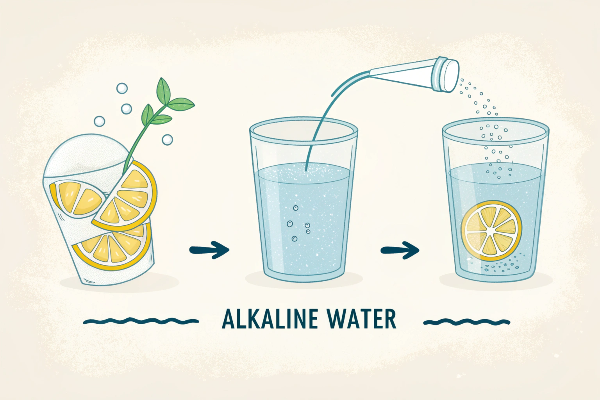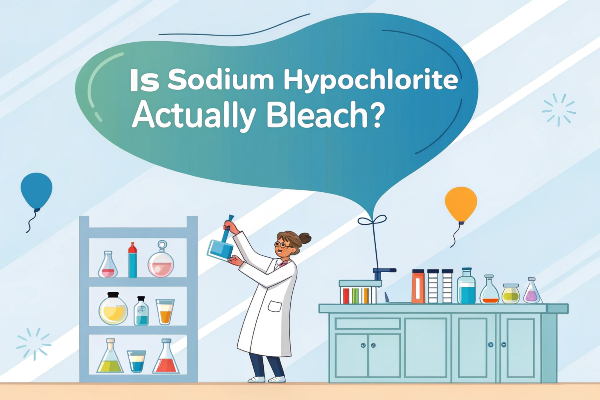Feeling overwhelmed by all the disinfectant choices and their potential dangers? Wondering if there’s a safe and effective option?
Chlorine dioxide is a yellow-green to orange-yellow gas recognized internationally as a safe, non-toxic green disinfectant. It’s used in various applications, including water treatment and as a mouthwash, due to its potent disinfecting properties.

But like any powerful chemical, understanding its nuances is crucial. Let’s dive into some common questions and separate fact from fiction.
Is Chlorine Dioxide Safe in Drinking Water?
Struggling to find reliable information on water disinfection methods that are both effective and safe for your family? Concerned about the long-term effects of chemical treatments?
When used correctly, chlorine dioxide is considered safe for drinking water treatment1. It’s a powerful disinfectant that eliminates many harmful pathogens, often at lower concentrations than traditional chlorine.

Why Chlorine Dioxide is a Preferred Choice for Water Purification?
Chlorine dioxide has gained popularity in water treatment for several reasons. I’ve seen firsthand in industrial settings how it surpasses traditional chlorine in many aspects.
| Feature | Chlorine Dioxide2 | Chlorine |
|---|---|---|
| Disinfection Power | More effective against a wider range of pathogens | Less effective against certain viruses and cysts |
| Byproduct Formation | Fewer harmful disinfection byproducts3 | Can form trihalomethanes (THMs) and other DBPs |
| pH Sensitivity | Effective over a broader pH range | Effectiveness decreases at higher pH levels |
| Odor and Taste | Less impact on water’s taste and odor | Can impart a strong chlorine taste and odor |
| residual | longer residual | short residual |
However, It’s all about dosage and control. I think improper use can lead to unwanted byproducts or residual levels, so adhering to regulations and guidelines from organizations is essential.
Is Chlorine Dioxide the Same as Hydrogen Peroxide?
Confused by the similar-sounding names and chemical formulas of various disinfectants? Are you wondering which one is right for a specific application?
Chlorine dioxide (ClO2) and hydrogen peroxide (H2O2) are distinct chemical compounds with different properties and uses. While both are oxidizing agents4, their chemical structures and reactivity differ significantly.

Comparing Chlorine Dioxide and Hydrogen Peroxide5: Key Differences
Let’s break down the differences between these two compounds, drawing from both scientific literature and my own practical experience:
| Feature | Chlorine Dioxide (ClO2) | Hydrogen Peroxide (H2O2) |
|---|---|---|
| Chemical Formula | ClO2 | H2O2 |
| Oxidation Strength | Stronger oxidizing agent | Weaker oxidizing agent |
| Applications | Water treatment, industrial disinfection, bleaching | Antiseptic, household cleaning, some industrial uses |
| Stability | Less stable, often generated on-site | More stable, can be stored for longer periods |
| byproduct | less byproduct | more byproduct |
While both are useful, they’re not interchangeable. For example, I wouldn’t use hydrogen peroxide for large-scale water treatment, and I wouldn’t use chlorine dioxide as a direct antiseptic on a wound without specific, diluted formulations.
Is Chlorine Dioxide Safe as a Mouthwash?
Worried about the potential side effects of commercial mouthwashes and looking for a safer, more natural alternative?
Specific formulations of chlorine dioxide6 are used in mouthwashes and are considered safe when used as directed. These mouthwashes can help control bad breath7, reduce plaque, and fight gingivitis8.

The Science Behind Chlorine Dioxide in Oral Care
The key here is specific formulations. It’s crucial to understand that the concentration and formulation are designed for oral use.
| Benefit | Mechanism of Action |
|---|---|
| Odor Control | Neutralizes volatile sulfur compounds (VSCs) that cause bad breath |
| Plaque Reduction | Disrupts the bacterial biofilm that forms plaque |
| Gingivitis Control | Kills bacteria that contribute to gum inflammation |
| Whitening | Oxidizes stains on teeth, leading to a brighter appearance (in some formulations) |
I’ve found that chlorine dioxide mouthwashes can be a good option, especially for those sensitive to alcohol-based mouthwashes. Always follow the product’s instructions and consult your dentist if you have any concerns.
What is Another Name for Chlorine Dioxide?
Finding conflicting information online due to different naming conventions for the same chemical compound?
Chlorine dioxide doesn’t typically have alternative common names. It’s almost universally referred to as "chlorine dioxide" in scientific, industrial, and consumer contexts.

Understanding Chlorine Dioxide Nomenclature
While you have seen it abbreviated as ClO2, that’s its chemical formula, not another name. Sometimes, people might refer to it by its function, like "water treatment chemical," but that’s not a specific name.
| Term | Meaning |
|---|---|
| Chlorine Dioxide | The standard and accepted name |
| ClO2 | The chemical formula |
| Chlorine(IV) Oxide | A systematic chemical name, but rarely used informally |
It’s straightforward. Stick with "chlorine dioxide" to avoid any confusion.
How to Remove Chlorine Dioxide from Drinking Water?
Concerned about residual chlorine dioxide levels in your treated water and want to ensure its complete removal?
While chlorine dioxide typically dissipates relatively quickly, methods like aeration9, using activated carbon filters10, or adding sodium thiosulfate can remove residual chlorine dioxide from drinking water.

Methods for Chlorine Dioxide Removal: A Practical Guide
Several factors influence the persistence of chlorine dioxide in water, including temperature, light exposure, and the presence of organic matter.
| Method | Description | Effectiveness |
|---|---|---|
| Aeration | Exposing the water to air, allowing the gas to dissipate naturally. | Moderate |
| Activated Carbon | Using filters containing activated carbon, which adsorbs the chlorine dioxide. | High |
| Sodium Thiosulfate | Adding a small amount of sodium thiosulfate11, which chemically neutralizes the chlorine dioxide. | Very High |
| Boiling | Boiling water | high |
My experience suggests that a combination of methods, like aeration followed by activated carbon filtration, often provides the most comprehensive removal.
Conclusion
Chlorine dioxide is a powerful and versatile disinfectant with a range of applications. Understanding its properties, uses, and safety considerations is key to using it effectively and responsibly.
-
Discover various safe water treatment methods to protect your family from harmful pathogens and ensure clean drinking water. ↩
-
Explore this link to understand the safety and effectiveness of Chlorine Dioxide in water treatment, ensuring your family’s health. ↩
-
Learn about the potential risks associated with disinfection byproducts to make informed decisions about your water safety. ↩
-
Learn about various oxidizing agents, their properties, and how they are used in different fields, enhancing your understanding of chemistry. ↩
-
Discover the versatile uses of Hydrogen Peroxide, from household cleaning to medical applications, and how it can benefit you. ↩
-
Explore this link to understand the safety and efficacy of chlorine dioxide in oral care products, ensuring informed choices for your dental health. ↩
-
Discover various treatments for bad breath, including natural remedies and products, to enhance your oral hygiene routine. ↩
-
Learn about home remedies and treatments for gingivitis to maintain healthy gums and prevent further dental issues. ↩
-
Discover the aeration process and its role in dissipating chlorine dioxide, contributing to cleaner drinking water. ↩
-
Learn about the science behind activated carbon filters and their effectiveness in purifying drinking water from chlorine dioxide. ↩
-
Explore this link to understand how sodium thiosulfate effectively neutralizes chlorine dioxide, ensuring safe drinking water. ↩





